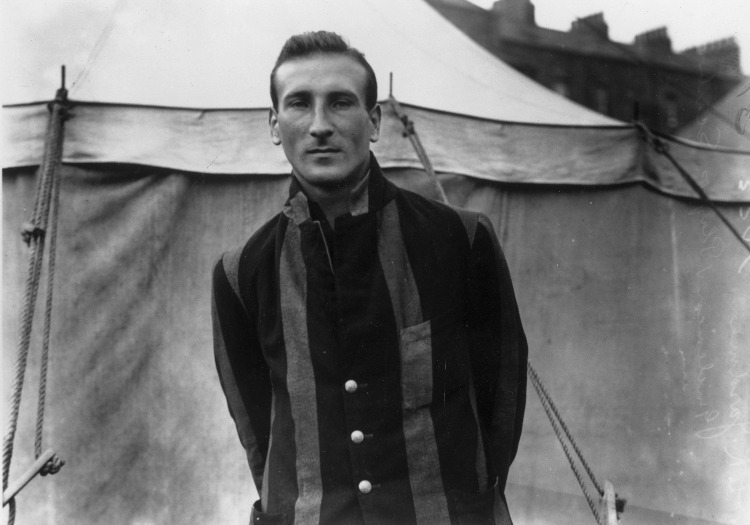The ball deflected off the top edge of Bert Oldfield’s bat, cracked him on the head, fractured his skull and rendered him unconscious. It was January 16th, the third day of the notorious Adelaide Test

Today marks the anniversary of the epicentre of the most infamous controversy in cricket.
The ball deflected off the top edge of wicketkeeper Bert Oldfield’s bat, cracked him on the head, fractured his skull and rendered him unconscious. It was January 16th, the third day of the notorious Adelaide Test of the 1932-33 Bodyline series. Oldfield, the ex-New South Wales gloveman, what guts he had. A man who’d experienced life’s hard knocks, having been shot in the leg during WW1 - he was buried for hours during the bombardment of Polygon Wood near Ypres at the end of World War One and was clinging to life when rescued - was carried from the ground, still unconscious.
English fast bowling, spearheaded by Harold Larwood, injured several Australian players: tough tactics intended to counter Australia’s premier batsman, Don Bradman. With the latest Ashes series decided, it is time to remember cricket’s most infamous tour, which inflamed a nation, risking England’s recall.
Bradman was key to Bodyline’s origins. When Australia won in 1930, his batting average was 139.14. A belief Bradman was vulnerable to short-pitched balls had Nottinghamshire’s Larwood and Bill Voce flinging down bumpers, beleaguered batsmen fending the ball into a cordon of slips, placed unconventionally on leg-side.
For many this tactic offended cricketing niceties. There was dissension in the English squad too with one fast bowler, Gubby Allen, refusing to join in. ‘Bodyline’, however, it would be. The English referred to their tactic as ‘fast leg theory’. The Australian press preferred ‘Bodyline’.

Larwood targets Jack Fingleton
The first Test saw Australia whipped, with Larwood taking 10 wickets. Aussie skipper Bill Woodfull refused to let his bowlers retaliate and was admired for his dignified leadership of a team literally under fire. Bradman was back after illness for the second Test, scoring a match-winning century to tie the series.
Controversy raged on the second day of the third Test. Larwood struck Woodfull under the heart, leaving him bent double for several minutes.
The home crowd jeered: police positioned themselves between players and crowd to avert a riot. Ironically, this incident occurred with Larwood bowling to a conventional field, but this was changed immediately after, resulting in more hostility, with jeering after almost every ball.
During the same over another delivery knocked Woodfull’s bat from his hand.
At the day’s conclusion, English team manager, Pelham Warner, went to the Aussie dressing room to build bridges. The Australian captain retorted with that summer’s most famous quote, that only one team was playing cricket.
The next day the crisis escalated as Larwood felled Oldfield, a popular New South Walian wickie who achieved a world record of 52 Test stumpings.
At the end of the fourth day’s play the Australian Board of Control telegrammed, labelling Bodyline ‘unsportsmanlike’, and warning of harmed relations between the two countries.
The MCC riled at the accusation, demanded a retraction, and the allegation of unsportsmanlike behaviour was reluctantly withdrawn two days before the fourth Test, saving the tour.

"Jardine’s ‘crime’, if it was one, was that he had played cricket to win"
The English team continued with ‘Bodyline’ and won the series 4-1. England captain Douglas Jardine’s ‘crime’, if it was one, was that he had played cricket to win. It seemed out of kilter then.
The game’s laws were subsequently changed to prevent repetitive short-pitched bowling and the placing of a cordon of leg-side fielders.
Larwood, England’s principal strike bowler, was asked to sign an apology, but refused as he’d only followed orders. He never played for England again. Anglo-Australian relations remained strained until the onset of World War II when Nazi aggression united the countries in common cause.
Oldfield, struck by a non-Bodyline ball, graciously admitted that his calamity had been his own doing. He missed the fourth Test, but returned for the Fifth.
Easy-going to a fault, there was nothing to forgive as far as he was concerned and the two protagonists became firm friends after Larwood emigrated to Australia. It seemed the players had rather more gumption than the game’s administrators and selectors.
1932-33 Test results: 1st Test (Sydney) – England won by 10 wickets; 2nd Test (Melbourne) – Australia won by 111 runs; 3rd Test (Adelaide) – England won by 338 runs; 4th Test (Brisbane) – England won by 6 wickets; 5th Test (Sydney) – England won by 8 wickets.